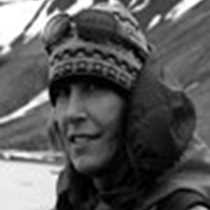Puinahua Canal: Cocha Nueva & Rio Pacaya
We woke up this morning to a strange sight in this corner of the tropics: cows, a fence, and a closed house. We’d grown so used to open homes built up on stilts above the floodline, that it took a moment to adjust. It looked like a happy home, and I think many of us felt the glow of the familiar when we saw calves scampering in the grass and a cow stepping into the garden to munch leaves.
We left this bucolic scene to head out in skiffs and explore Cocha Nueva, an area with oxbow lakes and quiet, flooded trees. We zipped by an island in formation, indicated by the proliferation of wild cane. Later, we cruised into the quiet curve of an oxbow lake, and it was hard to believe that this still place was once the main course of the river. The dynamism of this river system is phenomenal.
Tucked under the shelter of a huge ficus tree, we indulged in breakfast al fresco. I believe that the cassava flour buns tasted better in the open air. And it was a pleasure to be stopped by the presence of a long-billed woodcreeper making its cinnamon way up the tree trunk above us.
The early morning had been cloudy, and a bit of rain had shaken out, but by the time we headed back to the Delfin II, it was still and hot, and we were glad to tuck away from the midday glare and begin making our way further up the Puinahua Canal to the Rio Pacaya, where we spent the afternoon.
What an afternoon! The Rio Pacaya is truly a wonder. The clear, tannin-rich waters provide amazing reflections, and the various shortcuts that have been cut through between the river’s meanderings lead us into lakes filled with egrets and bromeliad-laden trees. We didn’t dally much on the way into the reserve, because we wanted to get far enough in that we might have a better chance of seeing the large and yet shy red howler monkey.
All three skiffs were rewarded with amazing experiences. Those who opted to swim first heard the ghostly sound of red howlers stating their claim from the middle of Pacaya Lake. Two groups called to each other over the still waters, their wind-in-the-rigging noise punctuated by the chuff of pink river dolphins breathing. Non-swimmers had many chances to view these burnished beasts in their high perches.
It’s the unexpected that brings a place to life. First, the world is enlivened by our knowledge of animals in our midst. Just knowing that a monkey is nearby, alert to our presence, makes the trees a bit more vivid. Then, after that, surprises open us further to an appreciation of our great fortune: a collared anteater in a tree, red-and-green macaws perched and preening, the purple subtleties of water hyacinth, a sunset that grew impossibly dramatic. These experiences can’t be scheduled; they must be lived.




